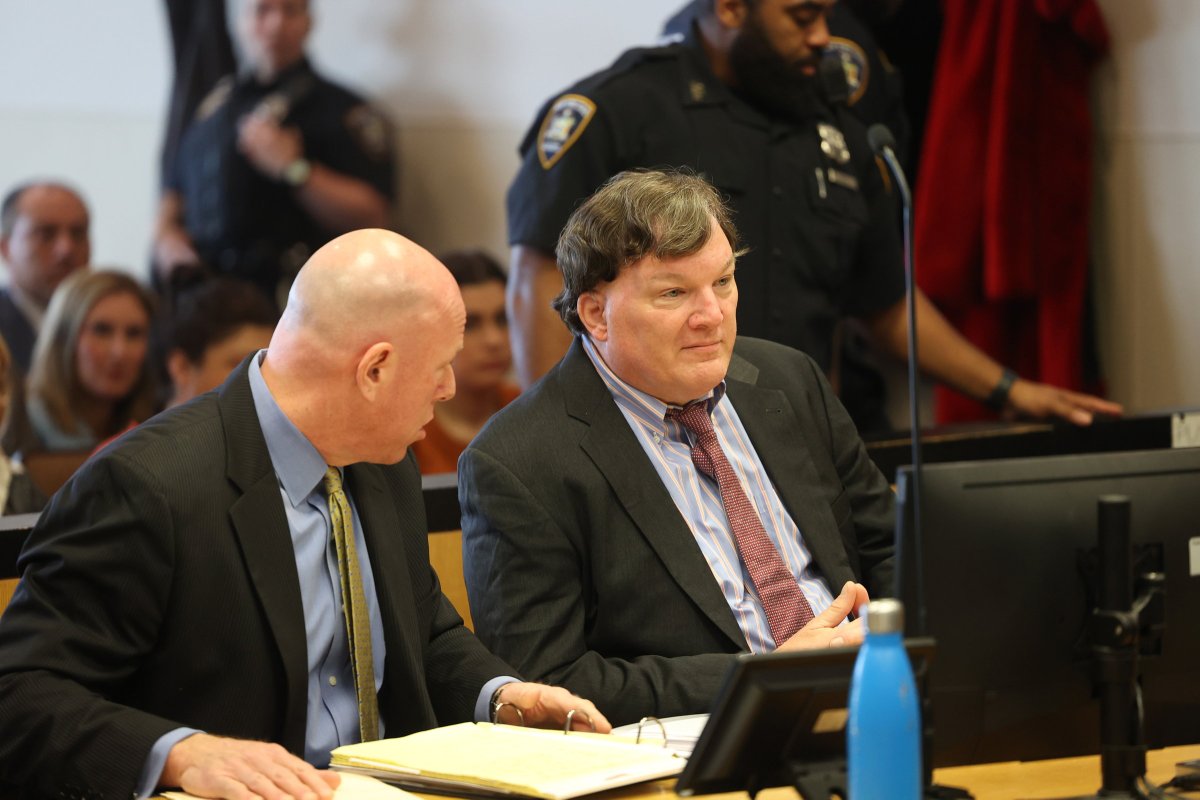Census Bureau Slashes Field Work, Excludes Non-Citizens

The director of the U.S. Census Bureau, Steven Dillingham, ordered on Monday night that “illegal aliens” be removed from the final numbers used to apportion seats in the U.S. House of Representative. In doing so, Dillingham is following a directive from President Donald Trump dated July 21.
New York State is expected to lose one seat in the House, if Trump’s directive is followed. California will lose two to three seats. The census has been conducted every ten years since 1790.
At the same time, Dillingham also ordered the truncation of the Non-Response Follow Up operation, known as NRFU, the largest and most expansive phase of a Decennial Census. It involves sending census takers to the many millions of households across the country who have not responded to the census. Experts say this action could seriously damage the accuracy and integrity of the 2020 Census.
According to critics, the latest actions, are part of a larger plan put in place at the start of the Trump administration.
Lawsuits have already been filed in federal court challenging Trump’s unprecedented action in regards to counting immigrants, but whether those suits can reach the Supreme Court in time remains to be seen.
A census of the entire nation is required by the Constitution to happen at least once every ten years. The numbers are used to apportion seats in the House of Representative, which also dictates the number of electoral votes each state has in the presidential election. The numbers are also used to draw up congressional districts within each state, and to distribute $1.5 trillion of federal money annually.
April 1 was the official Census Day. Where someone was living or supposed to be living on that date is what the Census Bureau wants to know. December 31 is, historically, the deadline to deliver the numbers used for reapportionment.
When Trump took office in January of 2017, the mechanics of the 2020 Census were already in place. However, the form itself could still be changed. The administration attempted to insert a question onto the 2020 census form requiring each respondent to state whether or not he or she is a citizen of the United States. Opponents argued that the insertion of the question was designed to suppress the response rate in the immigrant community. The Secretary of Commerce Wilbur Ross, whose agency the Census Bureau is part of, claimed in federal court proceedings, that he wanted to insert the question to protect the Voting Rights Act of 1965. In July of last year, the Supreme Court rejected Ross’s argument as specious, and the question was dropped.
In June of this year, the president appointed two Republican political operatives, Adam Korzeniewski and Nathaniel Cogley as aids to the head of the bureau, Steven Dillingham. They had previously worked as aids to Ross. Both of the hires have opposed the Census Bureau’s practice of focusing on hard-to-count minority and immigrant communities.
Last week, the administration asked congress for more money to speed up the census process while indicating that it would like to move the date of the conclusion of the major door-knocking operation up from October 31 to September 30, reducing the amount of time census takers will be given in the field to get an accurate count.
This came just days after Donald Trump ordered Ross to exclude what he called “illegal aliens.”
David McMillen is a Cutchogue resident who served as a staff member for the congressional committees charged with overseeing the census, first in the Senate from 1991 to 1995, then in the House of Representatives from 1995 to 2006. He was asked Saturday about the upcoming NRFU operation.
“The likelihood of NRFU working in seven weeks is close to zero,” he said about the September 30 end date. “I am sure they can get it done in seven weeks, but will we ever know the short cuts that were taken to get it done in that short period of time?”
In its original timeline for NRFU, some of that operation was to begin as early as April 9, with the main operation rolling out on May 11. Originally, NRFU was slated to end July 31, or after 80 days.
That timeline was rendered useless following the onset of COVID-19. All field operations were suspended on March 17. On April 13, Ross and Dillingham, both Trump appointees, sent a letter to Congress asking both houses to extend the census deadlines into 2021 because of the pandemic. In their request, they stated NRFU would begin on August 11, and run until October 31.
On July 30, NPR reported that the Trump administration had backtracked on the extension of time. Overnight, the Census Bureau changed key pages on its website, removing the October 31 end date for NRFU, and replacing that end date with language that reads: “The Census Bureau is working to complete data collection as soon as possible, as it strives to comply with the law and statutory deadlines.”
On August 3, the Census Bureau officially announced the change to September 30, as well as the bureau’s willingness to exclude undocumented residents from the apportionment numbers.
The Democratically controlled House has already approved the extension Ross asked for in its latest novel coronavirus relief package. However, the Senate, controlled by the Republicans and their majority leader, Senator Mitch McConnell of Kentucky, has never introduced a bill approving the extension.
Kenneth Prewitt headed the Census Bureau under President Bill Clinton during the 2000 Decennial and is now Carnegie Professor of Social Affairs at Columbia University’s School of International and Public Affairs.
When he learned in April that Ross had asked to push the apportionment date into the new year, he expressed surprise, particularly given the possibility that the White House and Senate will change hands as a result of the coming elections in November.
Previously, Prewitt had explained, “Republicans would fear, with reason, that a democratic administration would keep counting as long as it took to reach 100 percent.” McConnell’s press office has repeatedly refused to comment, not just to this news outlet, but to The New York Times, and to NPR, as to whether or not he planned on bringing the proposed extension to the floor of the Senate.
“The bottom line is the shorter the time spent, the higher the error rate,” McMillen said. “NRFU is a difficult process. You are dealing, for the most part, with households who don’t want to participate. They don’t trust the government; they are too busy; they are afraid, etc.”
“Why are they doing this?” McMillen asked rhetorically. “Republicans have convinced themselves that a less accurate census is to their benefit—poor people are left out and rich people are counted twice. The more they gum up the works the better for them.”
“The Trump administration has been pretty clear on its intentions since 2017, and they’ve tried multiple strategies,” said Margo Anderson, Distinguished Professor, Emerita, of the University of Wisconsin-Milwaukee, and author of “The American Census: A Social History.” “So far, only the pandemic has really thrown the processes of the count into jeopardy, and the administration is now trying to take advantage of that by messing with the operational deadlines,” she said.
Prewitt was asked what effect a truncated NRFU would have on the end result. “It is certain,” he said, that it “will produce high undercounts for some groups and some geographic units.” He added, “It is certain to damage the census.”
Some of those “geographic units” Prewitt referred to would be New York City as well as the East End of Long Island. While 95 percent of the country received information on the census delivered to their mailbox via the U.S. Postal Service, the same is not true for much of the East End, where many households receive their mail via Post Office Boxes. The Census Bureau has no way to match PO Boxes with addresses. Census material was scheduled to be delivered to much of the East End in person, starting March 15. COVID-19 put an end to that operation.
The census works in two steps. First, the bureau accumulates a record of what it believes to be every possible living quarters in the nation, then it reaches out to the people in those living quarters.
For a large chunk of the East End, that simply hasn’t happened. McMillen gets his mail at a PO Box. He hasn’t received anything from the census.
The national response rate to the census stood at 62.8 percent as of July 30, a remarkable number given that the country is suffering through a dangerous pandemic. That response rate is greatly aided by the fact that this year, for the first time ever, you can do your census online. Over half of all households in America have done just that.
The East End and New York City offer quite a different picture. The Town of East Hampton has a response rate of below 30 percent of all households, Shelter Island is below 26 percent. Southampton and Southold aren’t much better at 36.5 and 37.3.
Census takers working during a pandemic on the East End will need to determine where the household they are counting should have been on April 1. With a truncated NRFU, that may not be an easy question to answer.
In the city, Brooklyn, which has a large minority and immigrant population, the count is only 51.6 percent.
The census itself is only as accurate as its housing data base. There may not be enough time in a truncated NRFU to add housing units. McMillen pointed out that a recent raid in Riverhead that revealed alleged illegal housing units shows the flaw in the census master address list.
“There were several people living in an RV and several more in a converted garage attic,” McMillen said. “Since I see everything through census eyes, my immediate reaction was that those living units would never make their way onto the census address list, and consequently, fall completely outside the census process. . . The Census Bureau argues that their address list is ivory soap—99.9% pure. It is not. It is only an approximation of where people really live and how they live.”
“I keep reminding myself that the bureau operational plan is based on an address list, so the response rates we see in their daily app are responses from the address list,” Anderson said. “This round, I think the vacancy status of addresses is going to be a big deal. What we don’t know now—although I suspect the bureau folks do—is what the population count is looking like from what they’ve gotten to date.”
“I think someone from the Republican National Committee has worked their way into the administration and is calling the shots on this,” McMillen said. “This is far too sophisticated an attack for it to be thought up by Trump or his inner circle. And they seem to have the census bureau under their thumb.”
Anderson warned, “As with everything else in this country in the next four months, it’s a roller coaster ride. So in that sense, the census, the pandemic, the election campaign, the post office, the protests, much less the overall economy, are all in great peril.”



